Seaham: "Mad, bad and dangerous to know"
01/07/2019 | Angus Stephenson
This blog is about Seaham, a small town in County Durham, on the coast between Sunderland and Middlesborough, with a population of about 20,000. It was one of the places where my dad carried out post-mortem examinations in the local mortuary, when he had finished his army service as a doctor in the 1940s. 70 years ago Seaham was a very grim place. If it was heavy and industrial, Seaham did it. There were three coal mines in the town, foundries, brickworks, docks, huge coal staithes, a whole mass of railway lines and marshalling yards, and fishing boats. The air was horrendously polluted and as a kid I learnt how to spell pneumoconiosis and other lethal lung diseases before I could spell cat. If someone had told me then that in the future one of the biggest employers in the town was going to be a 5-star luxury hotel and the Serenity Spa, “a tranquil, calming and truly inspiring space which engages the senses and nurtures the mind, body and soul”, according to their website, I would have thought they were nuts. But let’s go back a bit.
Seaham’s origins were very modest. It was a small agricultural village centred on the parish church of St Mary the Virgin and Seaham Hall, the local landowner’s country house, with a few cottages and an inn, which have now vanished, along a road half a mile or so to the North of the modern town centre. The church was an Anglo-Saxon foundation with parts of it dating back to the 7th century.
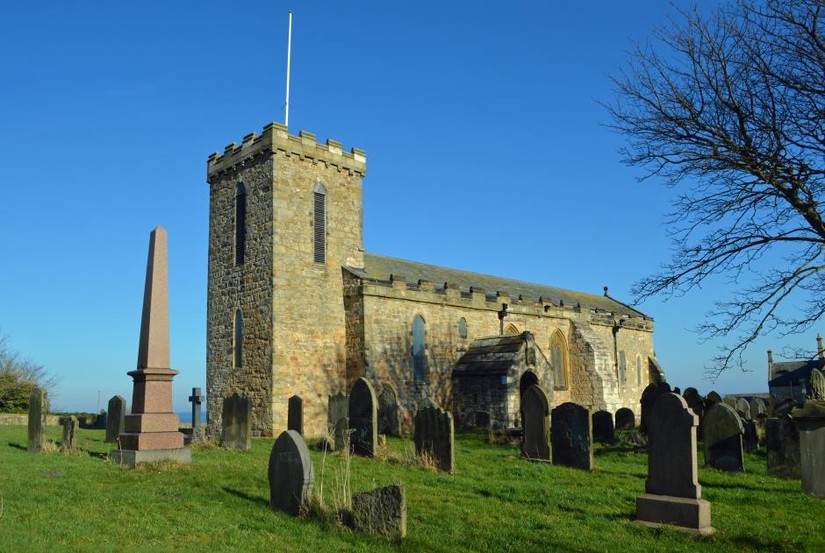
The Collingwood family, a well-known name in the North-East, sold their Seaham estate to the Milbanke family in c. 1678 and it was a later Milbanke, Sir Ralph, who rebuilt Seaham Hall in 1791/2. This building forms the nucleus of the modern luxury hotel and spa. It was in this period that a very unlikely celebrity appeared in Seaham to put it on the social radar, George Gordon, Lord Byron. By about 1812, Byron was a well-known poet and an extremely well-known public figure, as much for his hair-raising lifestyle, fairly shocking even by modern standards, as for his literary talents. Byron had affairs with several high-society women, including Lady Caroline Lamb, then the wife of a future Prime Minister, who famously described him as “mad, bad and dangerous to know”. Through Caroline he met Annabella Milbanke, the daughter of Sir Ralph, and rather strangely, the couple hit it off, rather strangely because Annabella was a highly educated, highly intelligent woman with a strong religious streak. Sir Ralph invited Byron to Seaham. He wasn’t particularly impressed at first, as he wrote to a friend: “Upon this dreary coast we have nothing but county meetings and shipwrecks, and I have this day dined upon fish, which probably dined upon the crews of several colliers lost in the late gales. But I saw the sea once more in all the glories of surf and foam.” Even so Byron and Annabella were married at Seaham Hall in 1815, as witnessed by his friend, John Hobhouse. Unsurprisingly the marriage only lasted a year before Byron headed off to Greece and a glorious reputation as an international hero in the country’s war of independence, with possibly a bit of personal baggage left behind in the slipstream.

How has Seaham celebrated its association with Byron? Firstly we have this very jolly artwork by local artist David Gross outside the shopping centre. Here Byron and Annabella are supposedly dancing on their wedding night. Possibly a bit unlikely as Byron was notoriously club-footed (and tended to being overweight) and averse to dancing, and he was none too keen on his girlfriends doing it and showing him up either. Never mind Annabella, “People are you ready to do the bus stop?”
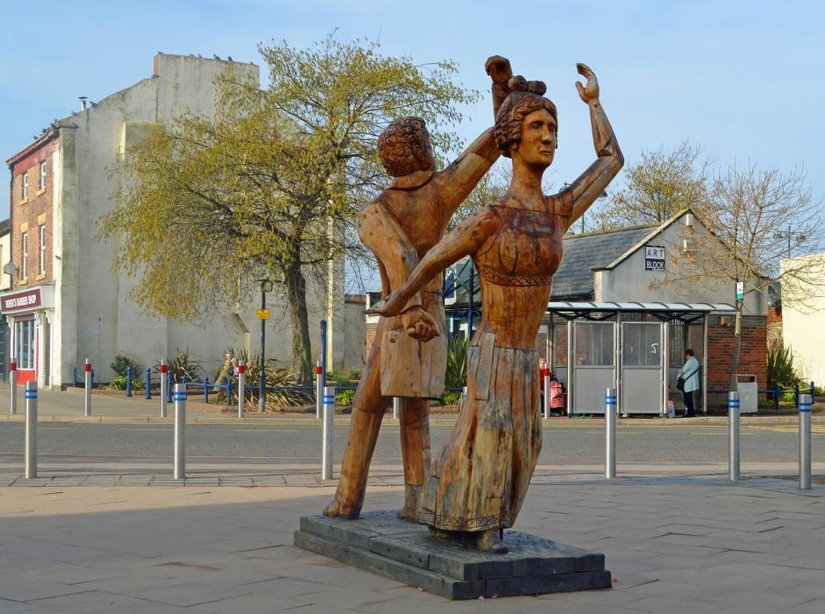
Secondly, the newish town shopping centre, which has many of the usual chain-stores, Argos and Asda for example, has been called Byron Place. The question is “Did Byron ever visit Argos?” He most certainly did, as he writes on August 10th 1810 from Tripolitza in Greece, in his letter to Hobhouse: “I am on the rack of setting off for Argos amidst the usual creaking, swearing, loading and neighing of sixteen horses, and as many men, serrugees included.” We know what you mean, my lord…trips to Argos are always trying! (Serrugees were Ottoman period horse handlers.)
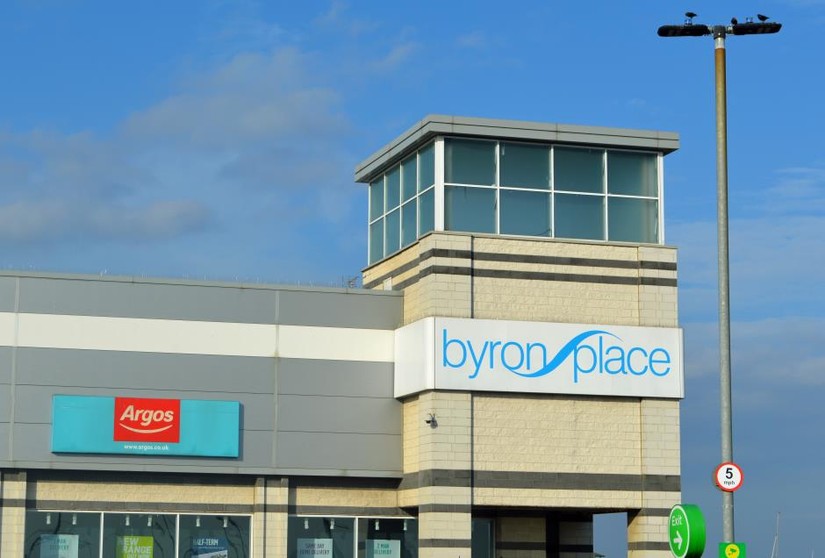
In 1821 the Milbankes sold their Seaham estate to the 3rd Marquess of Londonderry and the town’s fortunes changed dramatically. The heads of this family tended to be very entrepreneurial, although their industrial activities landed on a spectrum ranging from the paternalistically benevolent to the almost comically villainous. These were the sort of industrialists who used to be shown in left-wing cartoons wearing top hats and smoking cigars, and their enterprises dominated the town for more than 100 years. The 6th Marquess of Londonderry (1852-1915) was one of the more philanthropic holders of the title and his statue stands outside the Londonderry Offices near the harbour.
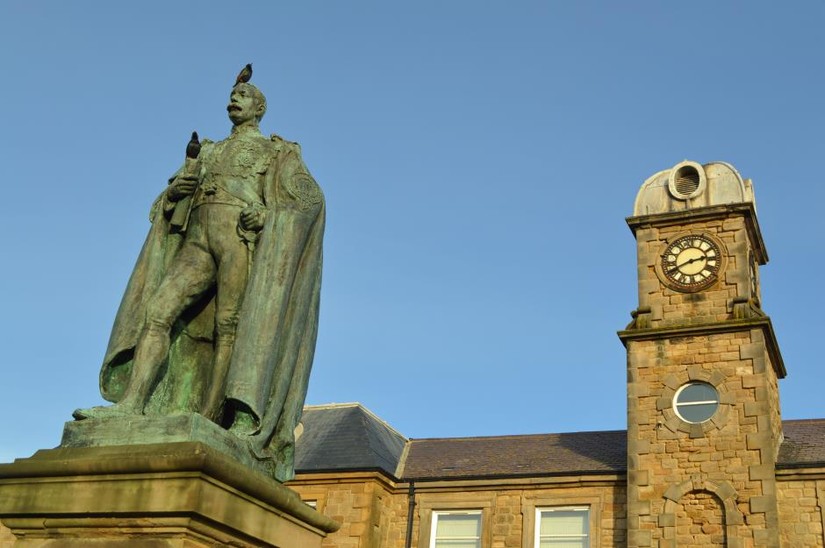
Charles Stewart, the 3rd Marquess of Londonderry married a wealthy local woman, Frances Anne Vane-Tempest, whose surname he took, as did a local coal-mine, and together they set about making a fortune out of their combined estates, which they did, turning Seaham into a hive of heavy industries. The Marquess had the harbour begun in 1828 as a deliberate rival to Sunderland, and it was later developed into the complex of docks we have today. This Marquess was not mad but he could certainly have given Byron a run for his money in the bad and dangerous-to-know stakes, particularly if you were a striking miner or one of his Irish tenants. The harbour has reinvented itself as the Seaham Harbour Marina, run by a Community Interest Company, a non-profit organization, and with the sun shining on the restored crenellated harbour-side lime-kilns and the Heritage Centre, the scene could be almost Mediterranean …. almost.
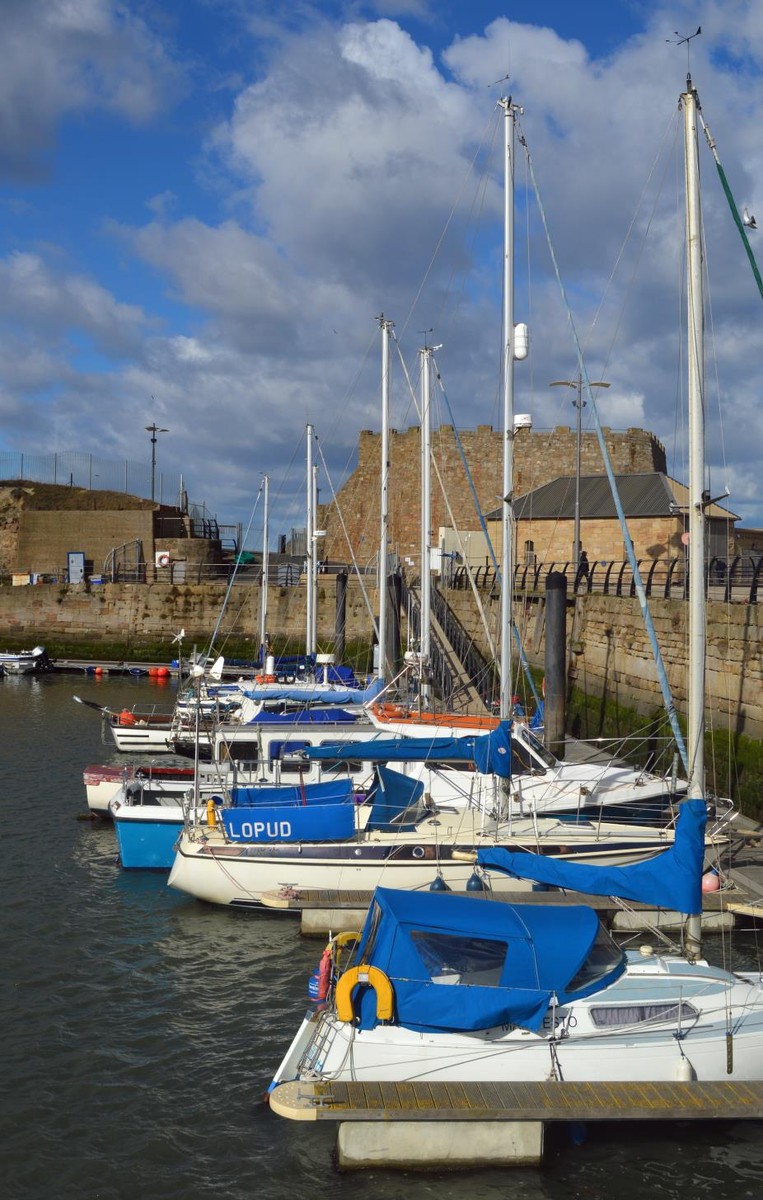
Whilst coal and iron were the key industries of Seaham’s industrial heyday, brick-making and glass-making were also important. The Londonderry Glassworks was begun by John Candlish, a future mayor of Sunderland, in 1853 and stayed in business until 1921, whilst the Londonderry Brickworks opened in 1868 and closed in 1965. The picture below shows Blast Beach, immediately to the south of Chemical Beach, just to the south of Seaham. The name derives from the blast furnaces which were situated on the top of the cliffs. Immediately to the left, west, of the headland, Nose’s point, was Dawdon Colliery, whilst to the north were the glassworks, with the brickworks in the middle of town. One thing that all of these industries had in common was that for years they dumped their waste directly into the sea. If you look at the base of the cliffs in the picture you will see up to 2 metres depth of compacted industrial waste, red and black burnt clay, slag, coal dust, cracked tiles and bricks and so on. Much of this overburden has been removed by the “Turning the Tide” project between 1997 and 2002, devised to reclaim the beaches and described in previous blogs, but there is still plenty there for the present-day tide to deal with.

Some of the cliffs along this stretch of coastline are essentially slag heaps moulded to the shape of the underlying rock formations.
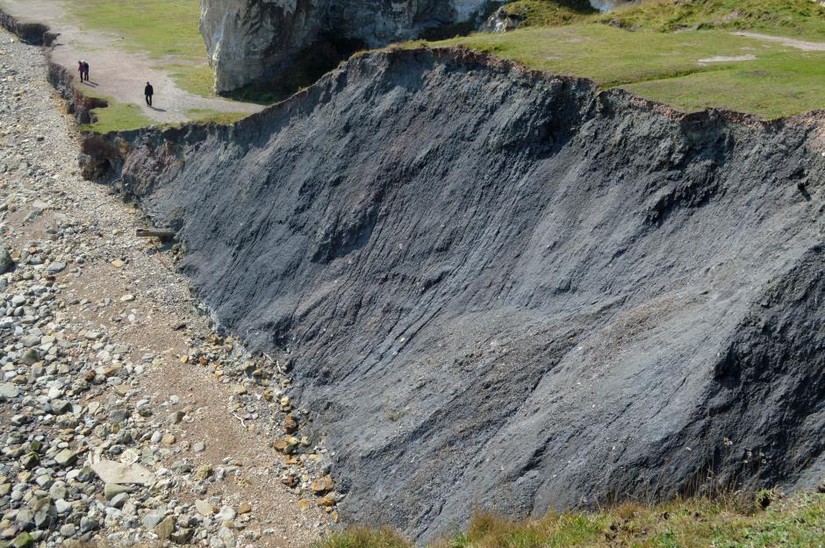
The glassworks, the United Glass Bottle Manufacturers Ltd in its later years, was a major operation producing 20 million bottles a year at its peak. One of its most important customers was Gilbey’s, the London gin manufacturers. The company produced the bottles in Seaham and took them by boat to Rotherhithe in London, the SS Lollard in the first place, followed by the SS Oakwell after 1887. The Oakwell was known locally as the “bottle-boat”. After dropping its load of empty bottles off in Rotherhithe, the bottle-boat would occasionally go across the Channel to Rotterdam to pick up a cargo of a particular type of sand useful for glass production. This all came to an end in 1917 during World War I when the bottle-boat hit a mine laid by a u-boat, and sank with the loss of 4 of its crew off Robin Hood’s Bay in Yorkshire. The company never really recovered, as this was the final straw to be added to the weight of changing production methods, and it closed in 1921.
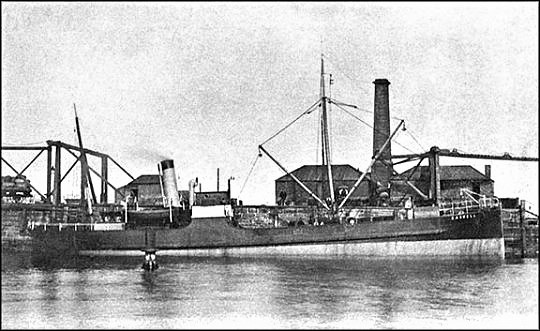
An article on the east-durham.co.uk website (Londonderry Bottleworks) says about the wreck-site: “SS Oakwell, built 1887: She has been dived on a number of times and her bell has been recovered by local divers. She is reported to be a reasonable dive-site and still worth a visit. Fair numbers of cod have been seen on and around the wreck and large lobsters are not an uncommon site.”
If you go for a walk along Blast Beach, or some of the other beaches in the area, you are very likely to find a Londonderry brick washed and rounded by the sea.
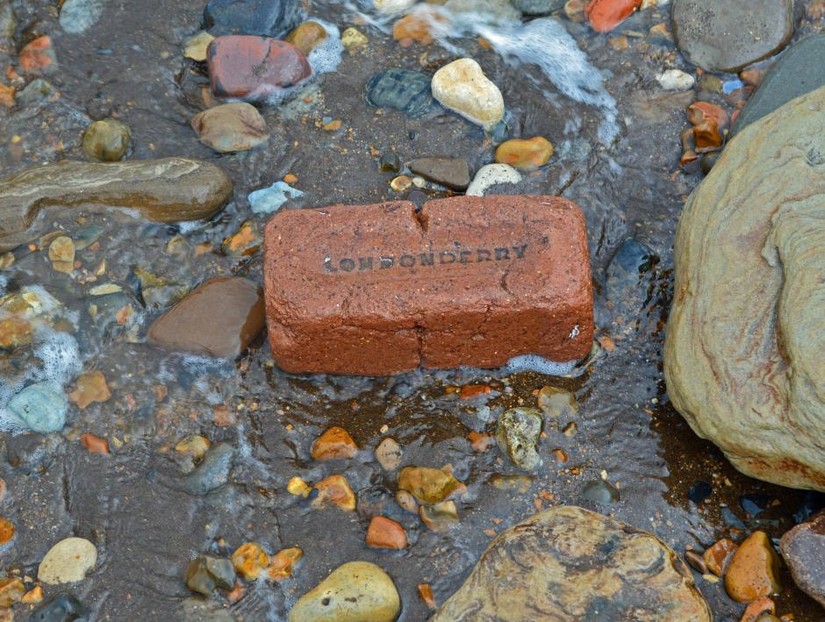
Here are the fruits of a not particularly rigorous stroll along Blast Beach for a couple of hours: a Londonderry brick, some odds and ends of pottery, a stone with a hole in it and sea-glass. The glassworks, a little further up the coast, used to dump its glass waste out to sea at the end of the working day, and it still washes up on the shore heavily abraded and patinated 100 years later, where it is collected and turned into personal jewellery nowadays……
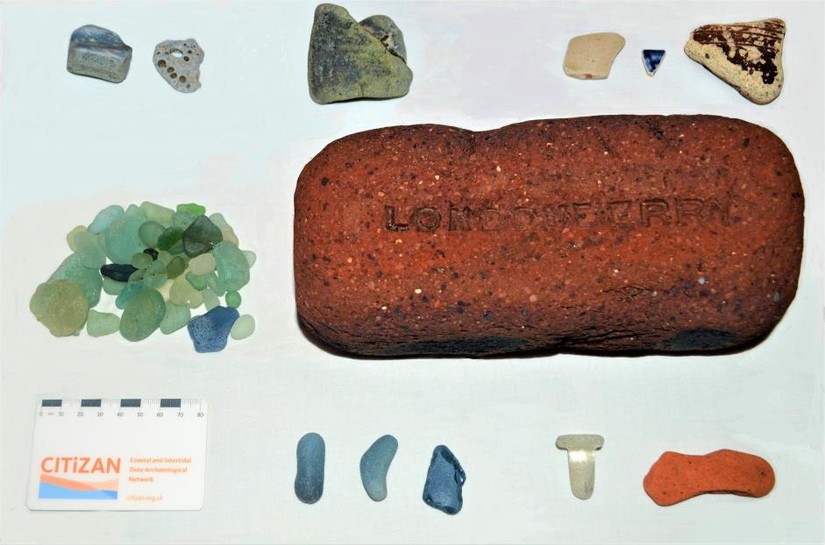
…and that is why, you will often find people walking along the beach bent over and looking down at their feet like this round here…they are looking for sea-glass! A curiously lightweight end to what was once a mighty commercial enterprise!
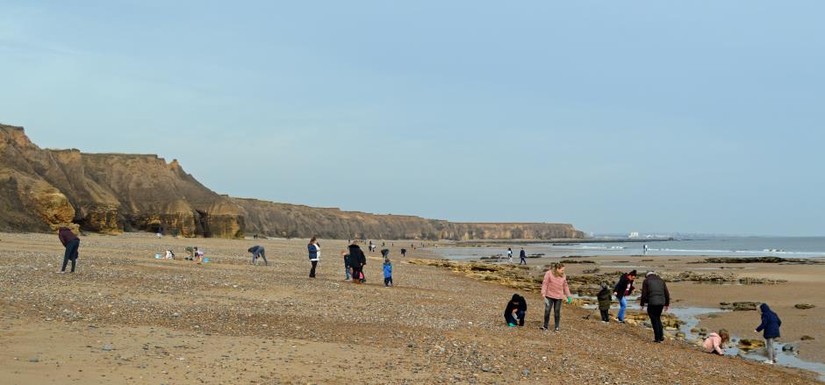
If you would like to know more about the area, you are recommended to go to the website of the East Durham Heritage Group and visit the Heritage Centre beside the harbour.








